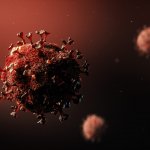Video • Radiology and COVID-19
Out of adversity comes opportunity
The critical role of radiographers in the coronavirus epidemic was highlighted in the final episode of the ESR Connect series of webcasts, ‘Radiology fighting COVID-19’.
Report: Mark Nicholls
Three European speakers in the session ‘Radiologists & Radiographers: Lessons learned from the pandemic’ (chaired by Helmut Prosch, Professor of Radiology at the Medical University Vienna), discussed their coronavirus experiences and how the pandemic might impact on radiology departments in the future – particularly as they work towards regaining routine clinical practice.
Reinstating, or reinventing healthcare?
Radiography triage will add value; radiographers are often the first healthcare professionals to see a diagnostic image; they have a key role as frontline, patient-facing staff
Nick Woznitza
Dr Nick Woznitza, senior lecturer and radiographer at Homerton University Hospital and the Canterbury Christ Church University in the UK, detailed the British Society of Thoracic Imaging’s Radiology Decision Support Tool for suspected COVID-19 and the route such patients take. Having been heavily involved in coronavirus care, Woznitza shared his experience in his presentation ‘COVID-19 – Departmental Planning & Radiographer Interpretation’, summarising how radiographers keep patients and colleagues safe and examining how imaging departments can begin to plan for the post-pandemic.
A phased reinstatement of other healthcare services according to clinical need, with pre-screening of out-patients for symptoms, remain key considerations, with dual working, where possible, to help reduce cross contamination, decontamination of equipment/rooms, and streaming into suspected/non-suspected COVID area. ‘The key question,’ said Woznitza, ‘is how we start managing the patient flow in the department and are we “reinstating, or reinventing” healthcare? One approach in England is that we adopt a regional approach, using different hospital sites for suspected or non-suspected coronavirus.’
Radiographers were ‘at the forefront of the crisis’, he added, playing an essential role in managing the pandemic and triage of COVID-19 cases, emphasising the importance of giving radiographers the right education and support to perform effectively under challenging circumstances. ‘Radiography triage will add value; radiographers are often the first healthcare professionals to see a diagnostic image; they have a key role as frontline, patient-facing staff. They deliver good patient management, reduce transmission risk and lead to reports produced as soon as possible.’ In looking at the pathway to go back to normal, he said: ‘We do not need to reinstate services; we need to reimagine services; there is the opportunity for a clean slate and start designing imaging investigations along the lines of how we would design them in an ideal world, rather than automatically do everything the same as we have always done. Out of adversity comes opportunity.’
Recommended article

Article • Re-establishing routine workloads
Restoring radiology to the 'new normal' after COVID-19
Diagnostic imaging examinations and radiology departments have been essential in the care of the millions of COVID-19 patients. As the virus abates, how should radiology departments return to “normal” operations? The American College of Radiology (ACR) and the Radiological Society of North America (RSNA) have published recommendations and guidelines.
Radiographer Dr Moreno Zanardo, currently a research fellow in the radiology department at the University of Milan’s IRCCS Policlinico San Donato, outlined how workflows can be maintained under difficult conditions, and key areas of minimising COVID-19 infection from patients; training radiographers in protecting themselves; maintaining precautions in the post-pandemic setting; and the role of mobile equipment.
Covering his experiences against a backdrop of limited clinical activity, PPE shortages, and steps towards the transition back to routine practice, Woznitza outlined how his institute minimised the risk of infections using isolated imaging rooms for suspected or confirmed COVID-19 patients; dedicated pathways to perform radiological examinations; centralised PPE supplies and appropriate equipment sanitisation scheduling to limit contamination. Sharing information – such as the WHO document on how to wear PPE correctly and involvement with an international group to train radiographers in the context of COVID-19 – and considering the mental health of radiographers and preventing burnout, with free psychological support and a weekly survey to investigate potential stress, are also crucial.
Use of mobile X-ray equipment was a valuable step, with the Bergamo region, at the epicentre of the Italian outbreak, performing more than 500 chest X-rays in nursing homes or patients’ houses. ‘We believe the costs of this approach are lower than bringing the patient to the radiology department,’ Zanardo said. ‘It also can be useful for reducing contamination and stress for the patient. Radiology dose is low; shielding is not mandatory, because lead aprons can be a transmission risk, he pointed out.
Now work must be rescheduled to move towards normal practice but, he noted, there are 1.2 million missed mammographs in Italy with asymptomatic screening mammography on hold until community risk is minimal.
The right tool for the task
Dr Lukas Ebner, leading thoracic radiologist at the Inselspital Berne, Switzerland, gave an overview of the benefits and disadvantages of CT versus radiography for imaging COVID-19 patients, taking into consideration local healthcare policies, resources and management at the point of care. CT, he said, is a sensitive tool, particularly in the early stage COVID-19 and in patients with no or mild symptoms and in the identification of complications such as pulmonary embolism, whilst chest X-ray is not so sensitive for early findings but with moderate, more advanced or severe symptoms, the ‘sensitivity increases substantially’. Other factors to consider are the logistics of having to send patients for a CT, the resources, and hygiene measures.
Ebner explained the triaging process at his hospital, which has a fast-track solution offering a turnaround time of two hours to rapidly identify patients who need hospital care and those who can self-isolate at home. He also highlighted examples of patients seen during the crisis at various stages of their disease progression and follow-up in each modality, along with useful resources helpful to radiologists and radiographers during the current epidemic. These included, ‘COVID-19 and the radiology department’ from the European Society of Radiology and the European Society of Thoracis Imaging; and ‘The Role of Chest Imaging in Patient Management during the COVID-19 Pandemic: A Multinational Consensus Statement from the Fleischner Society’.
Profiles:
Dr Nick Woznitza is senior lecturer and radiographer at Homerton University Hospital and the Canterbury Christ Church University in the UK.
Radiographer Dr Moreno Zanardo is a research fellow at the radiology department of the University of Milan’s IRCCS Policlinico San Donato.
Dr Lukas Ebner is the leading thoracic radiologist at the Inselspital Berne, Switzerland.
15.07.2020










